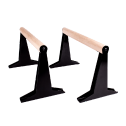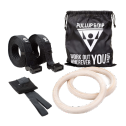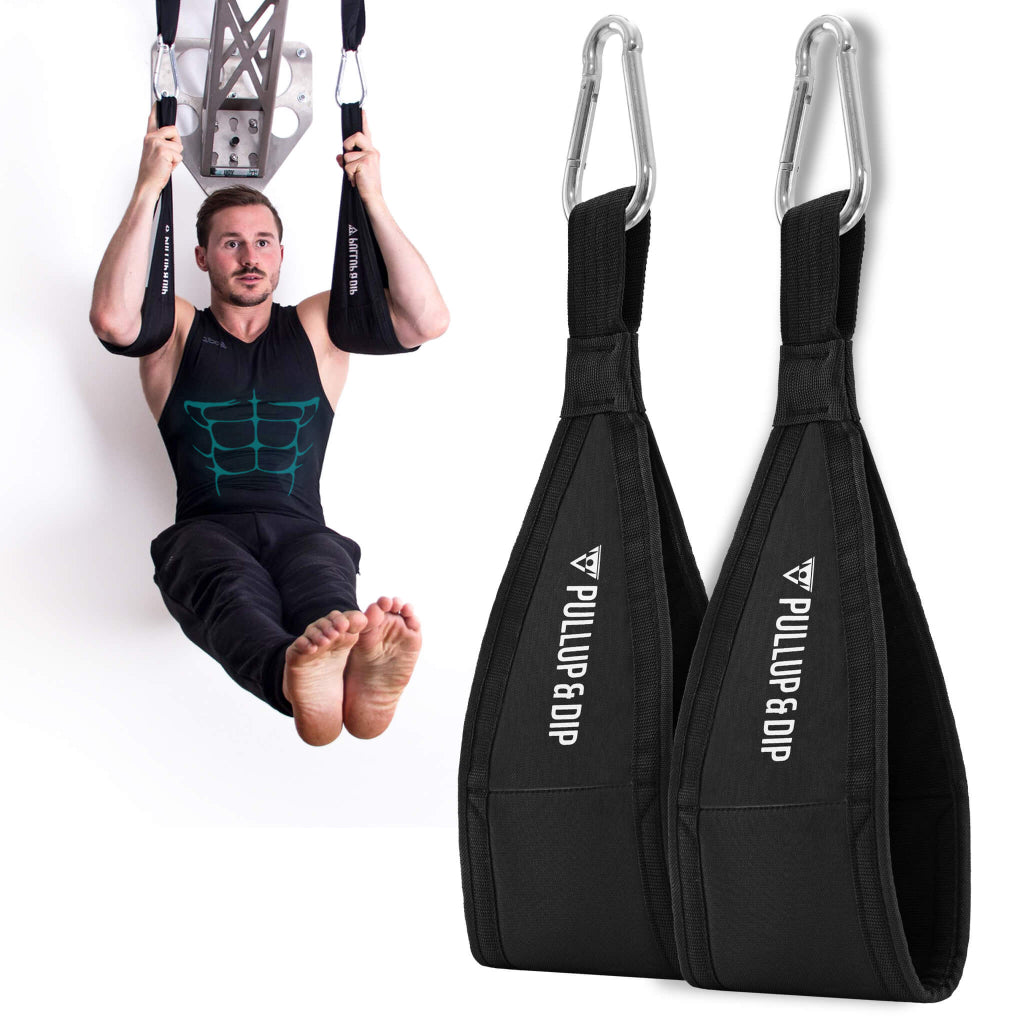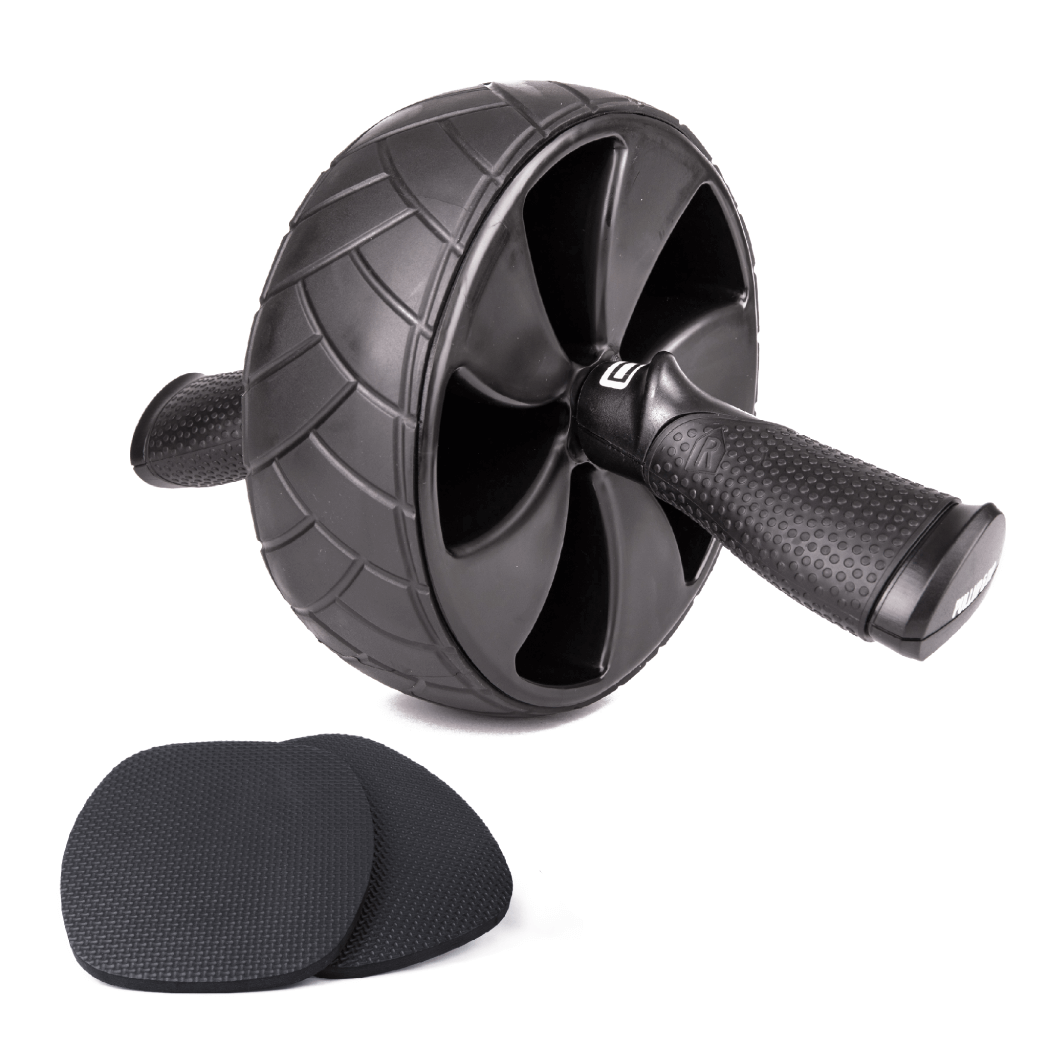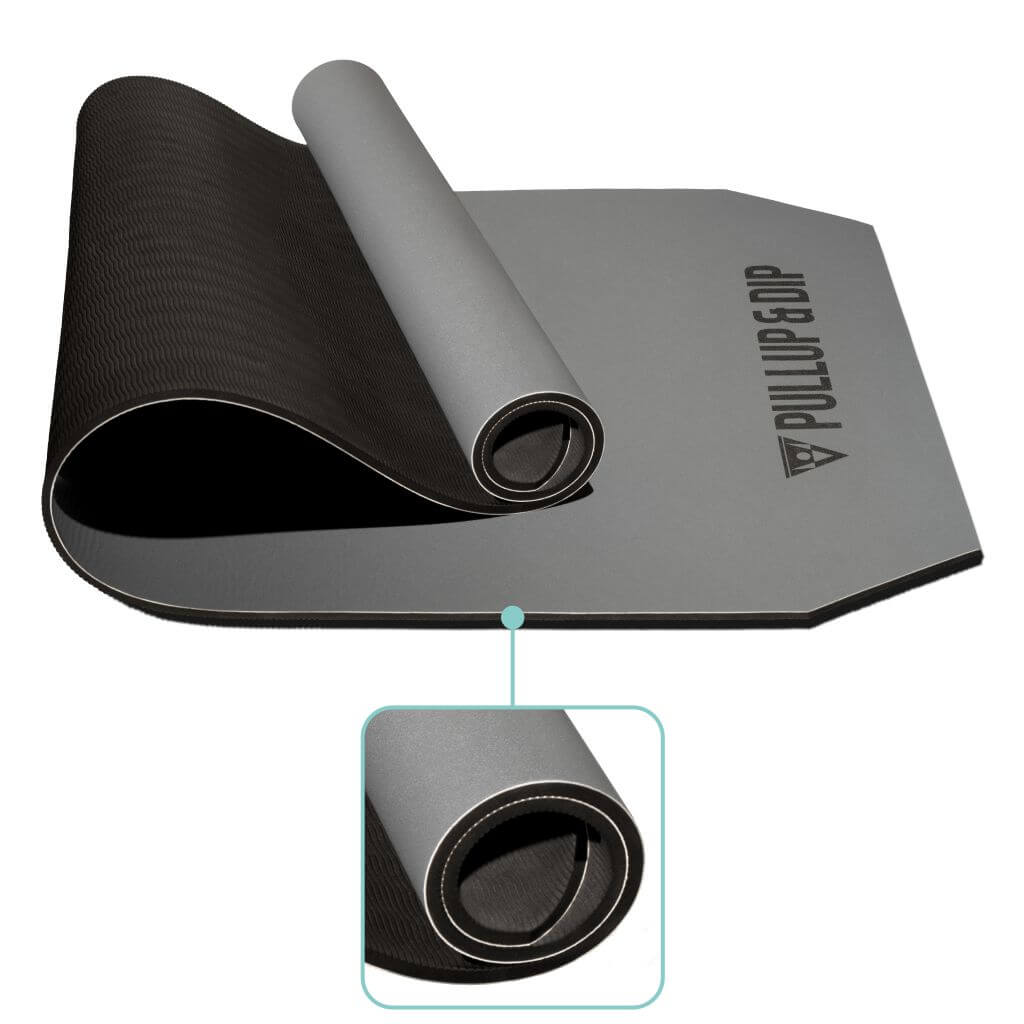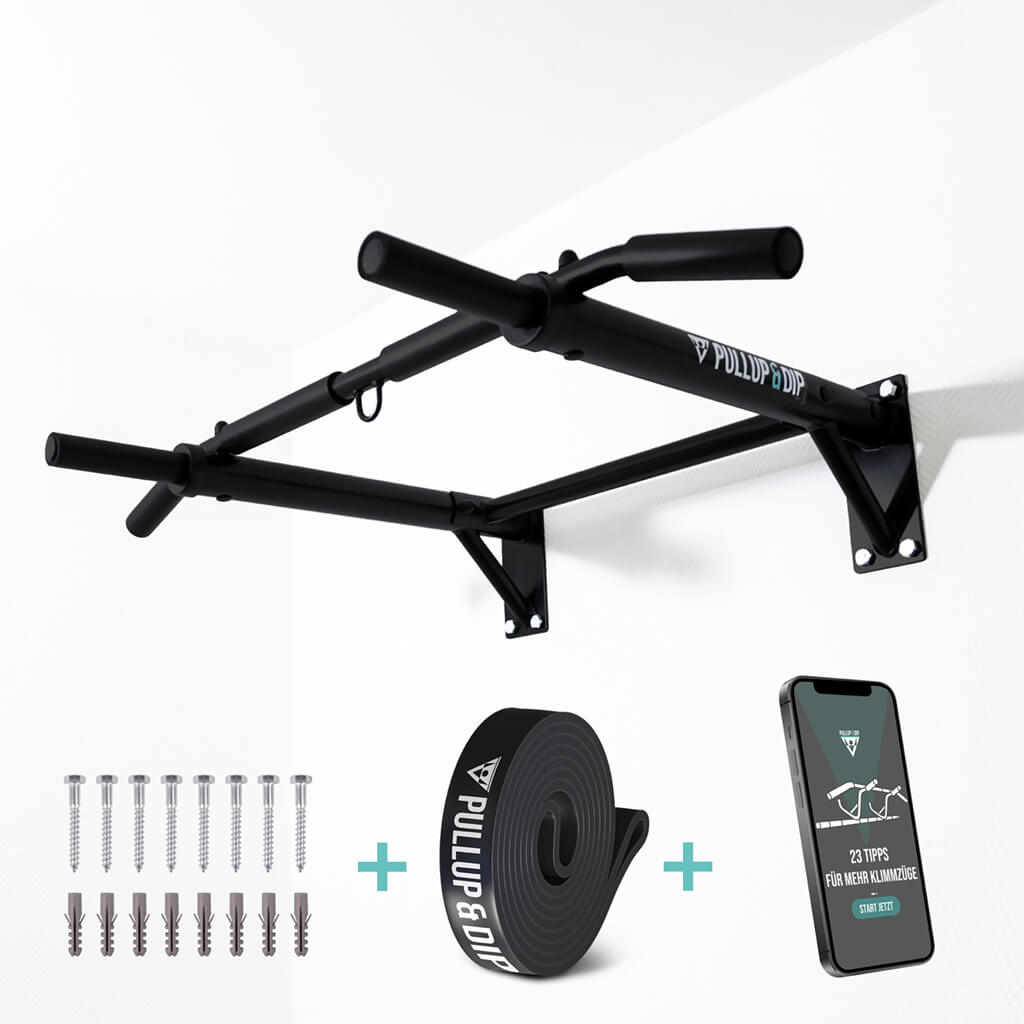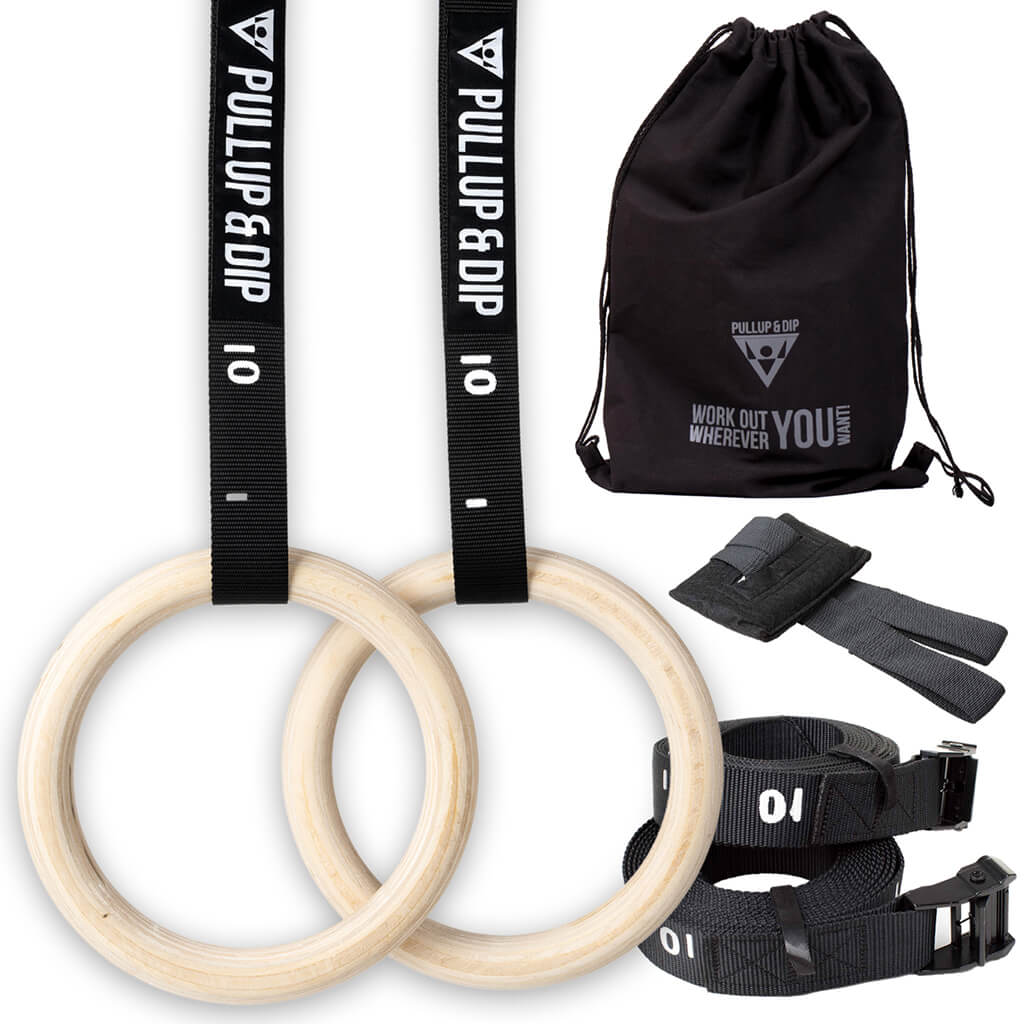As important and beneficial as abdominal training may be, it is still underrated in some parts of the sports world. From myths like " abdominal training is not necessary in the mass phase" to "abdominal training hardly does anything for weight loss anyway", half-truths still circulate in some cases.
In this blog post, we will start by clearing up all the myths and explain why abdominal training is best done consistently throughout the year. After that, we reveal the 6 most common mistakes in preparation for abdominal training and give tips on how to avoid them so that everything goes smoothly during your workout. Let's go!
Cheers to Abdominal Training: What Benefits it offers you and why it's a Must-Do
Abdominal training is part of a balanced training of the body - there is no compromise. If you only train your lower back but not your abdomen, you risk unhealthy posture. In the long run, problems with the spine, such as lumbago, are possible.
By training your abdomen, you prevent health risks because you strengthen your core. Since abdominal training also involves the lower back, you can also use abdominal training to compensate a lack of lower back training.
Besides the health effects on the anatomy and physiology of the human body, abdominal training is also useful for building muscle. As a small part of the overall muscular system, abdominal training is an important piece of the puzzle on the way to an aesthetic and overall consistent look of your body.

As you burn calories during abdominal training, the exercises are also suitable for losing weight. The following recommendations also apply to a holistic diet:
- The best way to lose weight is through endurance training, endurance sports and total body training.
- You also need a calorie deficit, which means that you can eat fewer calories than you consume.
- Because the body only breaks down fat "where it wants to", abdominal muscle training is absolutely essential in order to lose weight specifically in the abdomen.
Healthy posture, building muscle, dieting - these are the benefits that make abdominal training a real game changer for most athletes. This is especially true in calisthenics and bodyweight training. In these types of sports, it depends on a low body fat percentage to be able to perform the exercises well. For push-ups, pull-ups and even more challenging exercises like the Front Lever, tremendous body tension is required - strong abdominal muscles contribute to this stability.
Your Magic Pill for an Optimal Abdominal Workout: 6 Mistakes and Tips against them
Even though most abdominal training exercises may seem easy, there are plenty of sources of error. When it comes to exercise performance, exercise selection and other aspects, motivated athletes make mistakes from time to time. From now on, these mistakes belong to the past - thanks to our 6 top tips for abdominal training!
1. Mistake: Incorrect Execution and Posture
In the execution of exercises, it is often not considered that it is mainly the abdominal muscles that should work. And so it comes as it has to come: The upper body is swung upwards or the arms are used to simplify the respective exercise. It becomes particularly clear with the example of the sit-up.
Example: You perform the sit-up as a classic abdominal exercise by using the strength of your abdominal muscles - and only your abdominal muscles (!) - to move your upper body upwards.
1.In the starting position, lie on your back with your feet on the floor and your knees bent at the same time.
2. Now push your upper back upwards, but only minimally. Then lower it down in a controlled manner, but not completely.
3. In the lower position, keep your shoulder blades just above the floor and your upper body minimally elevated. This keeps the tension on the abdominal muscles.
4. During the upward and downward movements, keep your lower back on the floor. Keep your arms next to you on the floor or rest them on your abdomen.

Problem: You may wonder why the arms should be next to you or on your belly? Surely the image of hands held behind the ears dominates in your mind. But they shouldn't be there, because that tempts you to use your arms with momentum to push yourself up more easily. The problem with using momentum to push yourself up is that you take a lot of pressure off your abdominal muscles and the workout becomes pretty inefficient for your stomach. It also comes with risks for your back: You usually move your lower back along with you due to the abrupt upward swing, which leads to a hollow back and can damage your spine in the long run.
Tip: By doing the exercises correctly, you will make your workout more efficient and ensure a beneficial effect on your health instead of a negative one. You will get the maximum benefit from abdominal training. For the sit-up we have explained the correct execution in the four points of the list above. For other exercises, the specific instructions apply, but many of the abdominal deadlifts are based on the sit-up, and thanks to the above instructions, you will be well prepared for the workout. Also, keep in mind for machine workouts: even with machine workouts (e.g., Ab Coaster, Crunch machine), the principles that you should work from the abdominals as much as possible apply. You can easily tell if you are doing this by whether your abdomen is under tension and begins to "burn" over time.
2. Mistake: Routine – always the same Exercises
You might know it from training other muscle groups: Over time, the body adapts to the methods used. Then both the muscle building and the strength increase are more difficult than before. In the beginning, it may still help to increase the weights or the load during the exercises, but with time the exercises have to be changed in order to escape the routine and to make progress. But as time passes, even this is not enough and it is recommended to change the exercises.
Example: You are making good progress with a 90-day abdominal training program using the " Plank " exercise. After the 90 days, you continue with the workout, but don't make any more progress. You increase the weight, but that only makes a difference for a few weeks. The reason for this is that your body has become accustomed to the exercise.

Problem: Not making any progress wears down your motivation. To make sure you like working out - liking to work out is essential to maintaining and consistently following through on your workouts - you should create a workout schedule where you regularly switch up exercises and challenge yourself.
Tip: Be careful. The body can also get used to changing methods. Doing different exercises over and over again can also reduce efficiency of the workout. Therefore, our ultimate advice is to make a selection of exercises for yourself for a period of 1 to 2 months. Once half of the period is over, you can use weights, for example, as an additional stimulus to perform the exercises. When the period is completely over, replace at least the majority of the exercises. This way you create a training plan with exercise variations, but in between you keep the exercises long enough to better observe and evaluate your progress.
3. Mistake: Individual Muscles are omitted
Apart from the fact that a regularly changing training plan is helpful to avoid the routine just mentioned, the plan contributes to the consideration of all muscle groups. In this way, you avoid forgetting individual muscles during abdominal training. On the one hand, the training gets more variety and, on the other hand, you train your entire lower upper body part - your core - in this way holistically and thus best for health as well as appearance.
Example: You have been training crunches for two months and have made progress that pleases you. Now you take the next step and increase the intensity by choosing a new exercise: the particularly challenging v-up. In this exercise, you move your legs and arms straight up so that your body forms a " v " in the upper position. However, you don't succeed at this exercise at all because you don't have enough strength in your lower abs to lift your legs up high enough.
Problem: Especially the lowest abdominal muscles and often the lateral abdominal muscles are neglected during abdominal training. Since some exercises require strength in these muscle areas or an overall strong abdominal musculature, people who only know basic exercises like the sit-up, the plank or the crunch come off badly.
{article numbers="<P-00900>"}
Tip: Set a training plan in which you take into account all the muscle parts of the abdomen. This is how you build the foundation for being able to perform particularly strenuous exercises like the v-up and the jackknife later on. To get you started, we've put together three exercises for each of the three abdominal muscle groups.
1. Straight Abdominal Muscles
- Plank
- Sit-up
- Ab-Wheel-Rollout
2. Lower Abdominal Muscles
- Reverse Crunches
- Leg Raises (hanging and lying down)
- Hip Lift
3. Lateral Abdominal Muscles
- Bicycle-Crunches
- Russian Twist
- Plank mit Rotation
4. Lower Back
- Superman
- Butt Lift
- Back Stretcher
Find out more about the individual exercises and their correct execution. You will notice that almost every exercise trains all muscle groups. Training the lower abdominal muscles by means of hip raises therefore also includes training the higher-lying straight abdominal muscles. However, the exercises in their categorization offer you the possibility to focus on individual muscle groups. In the end, that's what it's all about: Everything is trained, but by focusing on specific muscle groups, you can get a little more performance increase out of them than out of the others.
{article numbers="<P-01050>"}
For the exercises Ab-Wheel-Rollout and the hanging leg lift you will need equipment; here our abdominal roller and our pull-up bar door for hanging in the door frame prove to be useful. Primarily the pull-up bar opens up numerous possibilities for training the other muscle groups of your body: back, neck, biceps, triceps, shoulders, etc. - everything is possible with the pull-up bar!
4. Mistake: Wrong Breathing
"Am I breathing correctly right now? Or what was that again about breathing in and out? Oh, it's best I just hold my breath!" This, or something similar, is probably going on in some people`s heads during a workout. Unlike exercises with few repetitions and intense load, proper breathing is especially important during abdominal training. Why? Well: During a load of more than 4 or 5 repetitions, the body consumes more oxygen than during short duration loads.
Example: It is said that breathing out into the tension (contraction of the muscles). This is simply because of the fact that due to the tension of the muscles during the execution of the exercise, the respiratory muscles are also tense and it is difficult to perform a breath. So it is inhaled in the phase of relaxation (extraction of the muscles)

Problem: If you breathe the other way around, you risk an injury in the worst case, because the breath during the tension phase can cause some muscles to slacken and come to harm as a result of the load during the exercise. A strain is an example of a possible injury, and tension can also be the consequence of incorrect breathing. And what if you don't breathe? Then your abdominal muscles won't get enough oxygen and will give out sooner - also inconvenient.
Tip: Our explanations about tension/contraction and relaxation/extraction mean for abdominal training that whenever your upper body and legs come closer together (e.g. upward movement during sit-up; pulling the legs towards the upper body during the AbCoaster machine), your abdominal muscles are tensed. Then you exhale. Therefore, before the first repetition, always (!) breathe in during abdominal training. When you move back to the starting position, your abdominal muscles relax. You then inhale to breathe in for the next repetition. Always breathe slowly and in a controlled manner; ideally exhale for one second during the contraction and inhale for 2-3 seconds during the longer extraction.
5. Mistake: Too Short Recovery Time
Basic knowledge in muscle building: Muscles grow during the relaxation phase. If you train every day, you put obstacles in the way of muscle building. For all your motivation, you should take it easy and leave plenty of rest between workouts.
Example: You train your belly 5 minutes a day - as a kind of morning routine for a disciplined start into the day? Then take a break every day for the first two weeks. After the first two weeks, you can work out every day, given the short duration of your workout, and only take a break on the weekend. The more the time of the workout increases, the more you should take a break.

Problem: If you increase the time of your workout and still train every day, you risk that your progress will stagnate over time or that you will injure yourself. Muscle soreness is nothing more than a collection of tiny and subtle tears in the muscles. The worst case scenario is one in which a muscle tear forms due to too few rests. Another risk of not taking enough breaks is general fatigue, which will leave you physically and then mentally exhausted.
Tip: The required breaks are to be expected depending on the duration of your workouts. Keep in mind that the abdominal muscles and the muscles of the lower back are small muscle groups altogether– this means:
- 20-30 minutes of workout is an unusually long time -> at least 2 days of rest.
- 8-20 minutes is a regular workout duration -> 1-2 days break is enough.
- 5-8 minutes corresponds to a crisp short workout -> working out in intervals of 16-24 hours covers the break time enough.
Apart from these general rules, you should also listen to your body, because it gives you the most reliable signals. So take breaks according to your feeling and reserve the right to take a complete week off for a change after 2-3 months of successful training.
6. Mistake: No Calorie Deficit and/or wrong Diet.
"Abs are made in the kitchen." This phrase, popular among fitness athletes, is 80-90% true. Diet is the indispensable basis for you to get a six pack. The rest is made up by training, although specifically abdominal training, which lasts 10-30 minutes every third day, is a remarkably small part of working out for a six-pack. „
Example: You have been training your abdominal muscles for months and have worked your way through a consistent training plan with exercise variation up to the very heaviest exercises. But very little of your progress shows visually. You go on a diet, but that doesn't really help either. The calorie deficit isn't enough? You try to make your diet healthier. From now on, it will only take four weeks and you will be the satisfied owner of a six-pack!

Problem: If you eat more calories than you consume, you won't lose weight. But it's not just the deficit that counts, because the quality of your nutrition also affects your diet progress. A calorie deficit that you achieve with burgers and fries, even in combination with a Coke Zero, will only be delayed or hardly show any results. Your body may lose fat, but it will be on your hips and legs at the very latest.
Tip: Decrease your body fat percentage to achieve defined abs - but do it with a healthy diet and not too abruptly! If you consume 1,500 calories less per day from one day to the next, you are too much in deficit and risk on the one hand a strong muscle loss, on the other hand a malnutrition or undernourishment. You are best off with a deficit of 500 calories per day. There are also numerous sensible diet concepts such as the ketogenic diet, the somewhat simpler low-carb diet, as well as the Mediterranean diet, interval fasting, etc. - feel free to try them out and stick to the healthy diets for a while so as not to overload your digestive tract with permanent dietary changes. If you do, your diet will surely be rewarded with success.
Conclusion
Abdominal training mistakes diminish the beach body and/or the overall look of defined musculature. For this reason, you should first take abdominal training seriously as it plays an important role for your entire body and especially your core: Definitely integrate abdominal training into your total body workout, perform it properly (focused working from the strength of your abs, proper breathing, sufficient recovery time, variation and consideration of all abdominal muscle parts in the workout plan) and achieve a balanced trained, healthy as well as aesthetic looking body!

Recommended articles:
The Top 10 Bodyweight Exercises for Quick Weight Loss
 Other Equipment
Other Equipment
 Gripping Aids
Gripping Aids
 Bandages
Bandages
 Tapes
Tapes

